
9 minute read
Copper 360 Starts Drilling Campaign In The Northern Cape
Emerging miner Copper 360 has started a drilling campaign to confirm the historical drill database from Newmont and Gold Fields on the Rietberg copper mine, in the Northern Cape.
The company had used the previous extensive geological database to model large bodies of copper mineralisation which will be targeted for mining. Owing to the core from the drill holes not being available, the company, as the final step before mining begins, has started a drilling campaign to test the validity of the historic geological database.
Advertisement
The company says results from the first two boreholes have confirmed the validity of the historical database in every aspect from geological rock type, type and quantity of mineralisation, and intersection widths and depths.
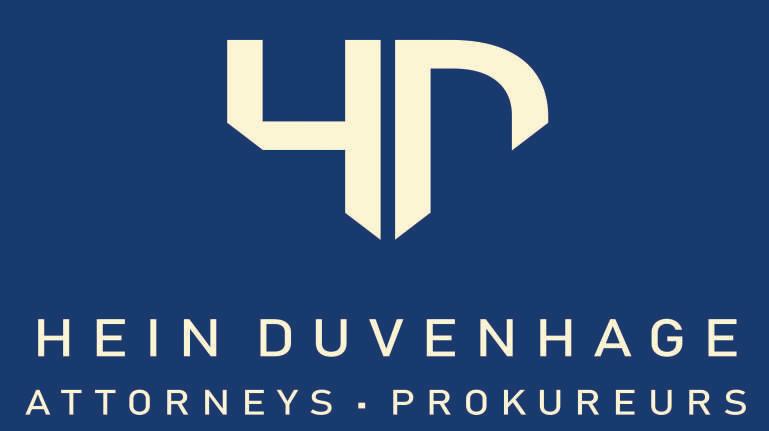
The first two holes have made copper intersections of over 45 m each just 30 m below surface. Initial X-ray fluorescence analysis yielded copper values of between 5% and 7% copper
“Having copper orebodies of over 40 m wide with continuous mineralisation running over 3% to 5% copper over the entire hole just 30 m below surface is spectacular and has exceeded all our expectations.
“What is more, we have development less than 50 m away from the mineralisation with all underground infrastructure in terms of orepasses etcetera already in place. We are currently busy with plant construction and will provide the market with further project updates in the coming months. We continue our drilling programme and will present these results on the day of listing aimed for the end of February,” comments CEO Jan
Copper 360 was formed in November 2022 following a reverse takeover of copper producer BigTree Copper and copper miner SHiPCopper The company will list on the JSE this month.
Copper 360 is currently producing 1 200 t/y ofA-grade copper cathode and is aiming to ramp up production to 7 700 t/y of copper within 24 months.
It is currently building three new copper flotation plants at a cost of R280-million. - Mining Weekly



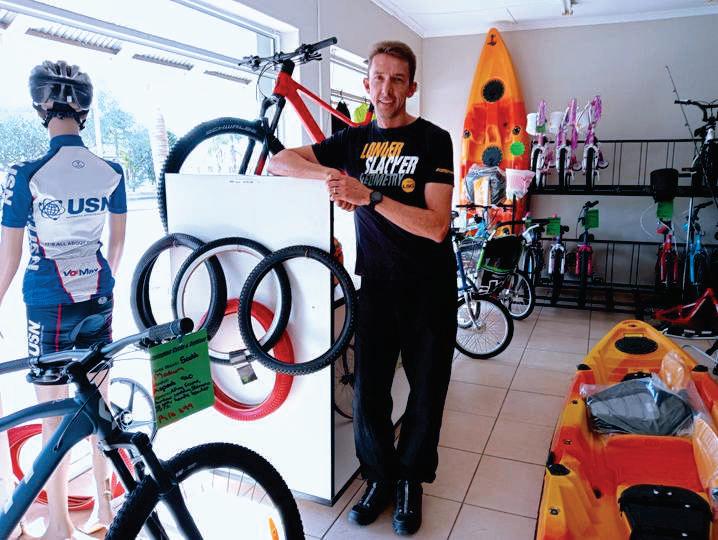

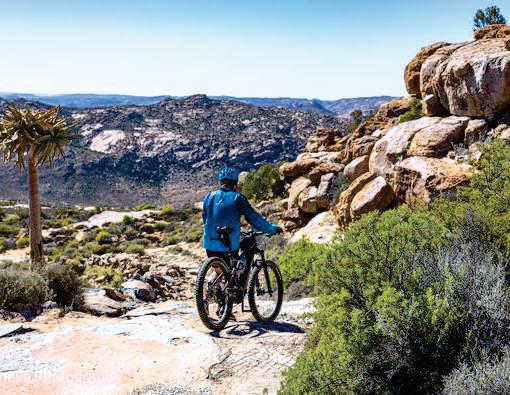
Vrydag 17 Februarie 2023
Santam: Eise Vir Skade Aan Sensitiewe Elektroniese Items As
Santam, Suid-Afrika se grootste versekeraar, is oorval met medianavrae oor die impak van beurtkrag op versekeringseise.
Beurtkrag is nie ’n versekerbare risiko nie, maar versekeraars bied wel dekking vir skade aan sensitiewe elektroniese items wat deur kragonderbrekings veroorsaak word.

Santam het ’n toename van 60% in eise vir skade aan sensitiewe elektroniese items as gevolg van kragonderbrekings gesien.
Om toestelle te beskerm en veilig te bly tydens beurtkrag, raai Santam verbruikers en besighede aan om van stroombeskermingstoestelle gebruik te maak, seker te maak dat hul alarmstelsel in ’n goeie werkende toestand is, ’n flits of koplamp byderhand te hou, noodkontakinligting byderhand te hê, toestelle te laai en toestelle te ontkoppel gedurende beurtkrag. -
Afrinuus
Foto: Unsplash
Bladsy 12
For some people, it’s just the ocean,” said Peter Owies, a Doringbaai community leader who grew up and lives in the small fishing community in the Western Cape.
“But if you live along the coastline, for some of us here, it gives you certain answers to certain questions. It’s an area where I used to look, to be quiet and still. No more.”
Owies’s comments come against the backdrop of a case due to play out in the Western Cape High Court between an environmental group and a mining company over continued mining along the West Coast.
Environmental NPC Protect the West Coast (PTWC) lodged an application with the Western Cape High Court to stop a diamond-mining company, Moonstone Diamond Marketing (Pty) Ltd (previouslyTrans Hex), from mining near the fishing community of Doringbaai and potentially along a stretch of coast north of the village that includes biodiversity hotspots such as the Olifants River Estuary and other critical biodiversity areas.
PTWC is arguing that the company, which broke ground last May, is mining with a renewed mining right that is not up to date with current social and environmental legislation nor upto-date science-based recommendations and rehabilitation measures.
In its founding affidavit, which PWTC filed on 15 December 2022 with the Doringbaai and Olifants River Small Scale Fishing Communities, PWTC’s legal team argue that the Department of Mineral Resources and Energy (DMRE), which is responsible for granting mining applications in South Africa, was incorrect to renew Moonstone’s mining rights, which are based on a 17-year-old environmental management plan (EMPr) last updated in 2005.
“If we don’t stop the situation, and we don’t stop companies like Moonstone andTrans Hex from operating under an out-of-date EMPr and in the way that they’ve always operated [not sustainable methods], our entire west coastline will start to look like that of the Northern Cape — a stretch of coastline that spans 250km, and it looks like the moon,” said Mike Schlebach, the CEO of PTWC.
Schlebach emphasised that they were not against mining, but that their main aim was to hold mining companies like Moonstone, the DMRE and the Department of Forestry, Fisheries and Environment (respondents in the case) accountable and to prioritise issues such as the cumulative impact of mining and to ensure sustainable mining practices are implemented along with the required social and environmental plans.
Moonstone is partly owned by SouthAfrican businessman Christo Wiese — his company Cream Magenta is the biggest shareholder
Trans Hex has an old mining site in Doringbaai from the 1990s that needed a renewed right to start mining there again, which it is entitled to apply for under section 24 of the Mineral and Petroleum Resources DevelopmentAct.
It last updated its EMPr in 2005, but SouthAfrican legislation has since changed.
Patrick Forbes, the legal head of PTWC, explained to Daily Maverick that as part of the amendments made to the National Environmental ManagementAct (Nema) and the Mineral and Petroleum Resources DevelopmentAct, we now have the “one environmental system”, which lists mining as one of the trigger activities for which a company needs an environmental authorisation. PTWC contends that the outdated EMPr cannot stand as an environmental authorisation and the mining right ought never to have been summarily renewed on that basis.
Forbes explained that “an application for environmental authorisation requires at the very least public participation, something which was entirely avoided with the current renewal, issued behind closed doors for another 30 years. By avoiding the environmental authorisation process Nema makes provision for, the local communities, the environment and fellow South Africans lose out.Allowing mining to take place in accordance with EMPrs that are 17 years old, without so much as calling for an update, is reckless.”
Moonstone’s mining right was renewed on the basis of its old EMPr from 2005, when the “one environmental system” was not in place, so it doesn’t have an environmental authorisation, according to PTWC.
InAugust 2021, Moonstone started the first phase of obtaining an environmental authorisation by preparing a draft scoping report for an upgrade of its EMPr.
“So they were themselves of the view, at least at a point in time, that they needed to upgrade their EMPr And then suddenly, that process just stopped,” Forbes said.
As far as PTWC can see, the application for an environmental authorisation was never finished, and the nonprofit didn’t see an environmental impact report circulated for public comment after the scoping report.
Professor Merle Sowman from the Department of Environmental and Geographical Sciences at the University of CapeTown and who is on theAdvisory Board of PTWC has been providing technical advice on the environmental assessment processes linked to the Moonstone and other cases said: “What was weird about the whole thing was that last year they appointed environmental consultants fromArchean resources to start an environmental impact assessment process, which they did begin, and they did prepare what’s known as a draft scoping report [first part of an environmental authorisation process].”
But after the final scoping report had been submitted, in which Moonstone planned to do multiple specialist studies on the beach ecology and fisheries, as well as the impact of aesthetics on tourism, and after the report had been opened for comments (many of which were received on the method of mining and rehabilitation plans), nothing more was heard.
Then, a few months later in May 2022, Doringbaai residents noticed digging on the beaches had started.
Benefit to the local community Owies said that initially opinion was split in his community when trucks turned up on their beaches in May 2022 — battling extreme levels of unemployment, many people in Doringbaai hoped the mining operation would provide jobs.

But so far only three locals have been hired. What’s more, the small-scale fisheries industry — the main economic activity in the town of 2,500 people — and kelpdrying projects have been affected since the mining prevents access to the beach and the water, while it has had an impact on the area’s ecology too.
“The ecosystem is broken, basically,” said Schlebach, explaining that the excavation of beach sand and disruption of sediment movement can affect various marine organisms, including certain fish species.
“As I grew up, those were areas where we as kids played… that was one of my favourite spots, where I took my dogs for a walk,” said Owies. “Now it is restricted.”
For Owies, the most critical point is to find an alternative that addresses unemployment in the area, but in a way that is meaningful for locals and less harmful to the environment.
He said the government has ignored their socioeconomic problems in the past, and only now that there is an opportunity to mine, has it taken notice.
No benefit for indigenous people

Martinus Fredericks, the leader of the Nama (originally spelt !Aman orAmaqua) people of SouthAfrica (clans that lived in this area for hundreds of years, part of the indigenous Khoikhoi), told Daily Maverick that “very few of the indigenous people are being incorporated into the mining activities, because those mining companies normally come with their own people”. “The people of the area don’t really benefit from any of the mining activities… [the only impact is] their coastal resources are now further diminished and destroyed.”
Mining companies are supposed to submit a social and labour plan to government departments as part of their application to mine. It is meant to outline job opportunities the operation will bring, any community-building projects they will undertake, and the contribution their activity will make to the locals.
Because Moonstone hasn’t applied for a new mining right, only the renewal of a decadesold one, PTWC claims there isn’t a new social and labour plan.
Daily Maverick askedTrans Hex’s head of legal,Aaron Larkins, on 23 January why Moonstone hasn’t applied for an environmental authorisation, considering the legislation and environmental landscape has changed, why it stopped and started the process of obtaining the authorisation, and what benefit it would provide to the community (and whether it had a social labour plan).
Larkins said “the information appears to be incorrect, in material respects, and in any event premised on a one-sided version of the facts/law”.
He did not clarify which facts were incorrect, but added: “Moonstone Diamond Marketing (MDM), or its predecessors, has been conducting a diamond mining operation in the De Punt area for more than 30 years, subject to the Department of Mineral Resources and Energy and Department of Forestry, Fisheries and the Environment’s oversight — these operations benefit the local community, not only through employment opportunities but also Social and Labour Projects (SLPProjects).”
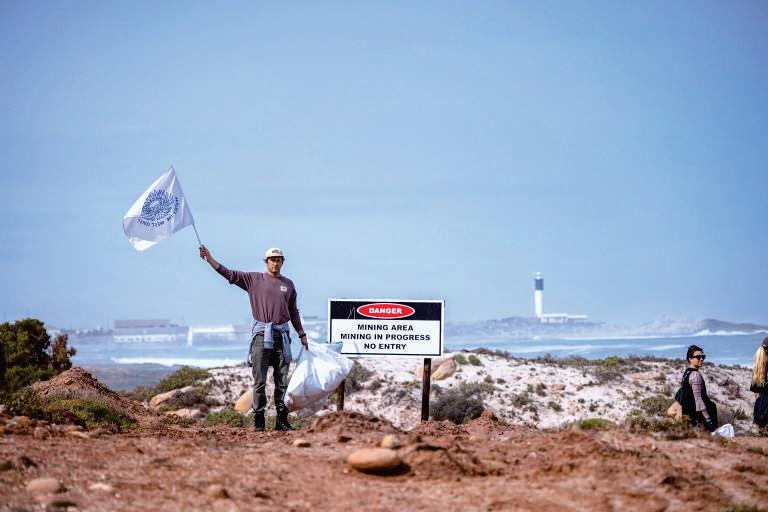
Larkins did not provide Daily Maverick with a social and labour project outline or plan.
Finally, he said that if Daily Maverick wanted to publish a “well-balanced” version, it should wait for Moonstone’s answering papers. Moonstone was meant to file answering papers on 25 January, but had not done so by the time of publication.
Daily Maverick also approached the DFFE and DMRE on 23 January, but had not received a response by the time of publication.
Cumulative impacts
UCT’s Professor Sowman said the 2005 EMPr was out of date since new laws (such as the Integrated Coastal Management Act, 2009) and updates to the environmental impact assessment regulations had not been considered.
“Additionally, the DMRE has not taken into account the cumulative effects of all the developments (past, present and future planned) nor the new knowledge we have about climate change, impacts of mining on beach and marine environments, as well as coastal communities dependent on the sea for their livelihoods, in their decision to renew this mining right.”
Forbes said that since the EMPr was updated in 2005, “significantly more scientific research has been done, more up-to-date and detailed mapping of the West Coast is available, and there has been an avalanche of new mining and prospecting applications that have been given authority and authorisation to mine up there or are under consideration”.
Sowman explained that the DMRE was responsible for approving applications for prospecting or mining on the West Coast — it granted the environmental authorisation.
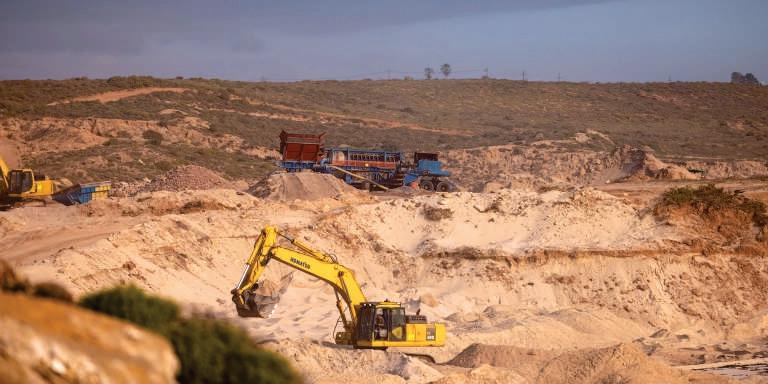
“Of course, there is a lot of concern about the minister of DMRE having the authority to give environmental authorisation when DMRE’s main mandate is the exploitation and development of our mineral resources,” she said.
‘Time for change’
PTWC wants the DFFE — also a respondent in the case — to have a coordinated approach with the DMRE, to consider the cumulative impact of all the mining operations that are continually being granted along the West Coast.
“If you look at the Northern Cape — it has just been obliterated in certain areas,” said Forbes. “That’s going to happen on the West Coast as well, if that same sort of dynamic or modus operandi is allowed to take place, where the DMRE just says, ‘go ahead’.”

“This is how mining on the West Coast has happened for the last 100 years — because it’s out of sight and out of mind. It’s time for change,” said Schelbach.
Reflecting on how the cumulative mining operations had affected his clan’s way of life, Fredericks said: “The remnants of our people that are still along the coastline, they live off the sea. They became fishermen, they made their livelihood out of the sea. So if you destroy the coastal areas, you destroy a whole community.”
DM/OBP










